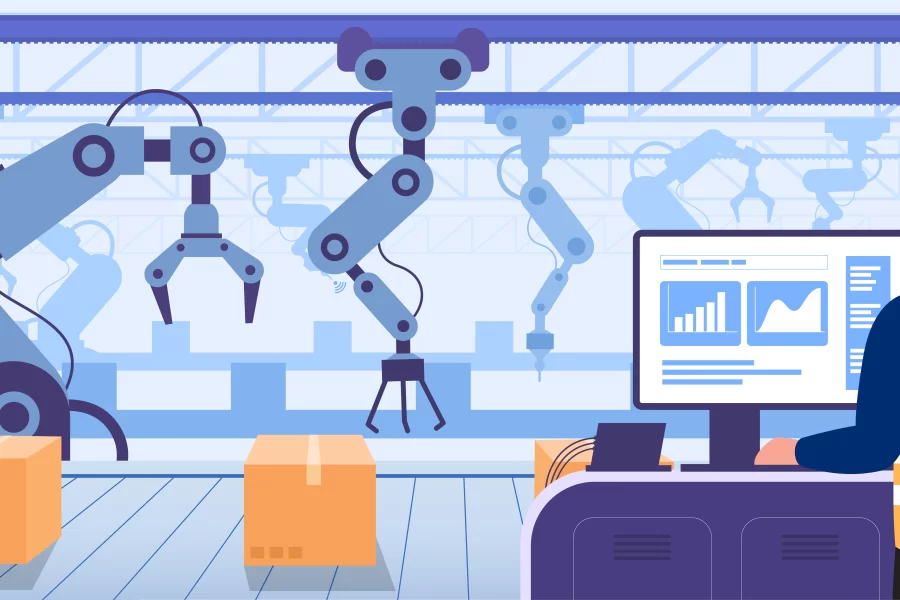
-
4 July 2025
Table of Contents What are the Advantages of Robots in Transporting Small Cosmetic Samples? Robot Technologies and Methods Used in Transporting Very Small Products How Do Precision Robots Ensure the Safety of Cosmetic Products? Methods…

4 July 2025
Table of Contents What are the Advantages of Robots in Transporting Small Cosmetic Samples? Robot Technologies and Methods Used in Transporting Very Small Products How Do Precision Robots Ensure the Safety of Cosmetic Products? Methods…

30 June 2025
Table of Contents Why Should Capping After Cream, Lotion, and Gel Filling Be Done with Robotic Systems? How Do Robots Correctly Place Cream and Lotion Caps? What Technologies Do Labeling Robots Use to Operate Accurately…

30 June 2025
Table of Contents Why Do Cosmetic Products in E-commerce Logistics Need Automation? How Are Cosmetic Order Picking Processes Accelerated with Robots? How Do Packaging Robots Adapt to Different Cosmetic Packaging Types? How Do Robots Reduce…

25 June 2025
Table of Contents What Problems Does Robotic Automation Solve in Medical Device Manufacturing? How Do Robots Increase Efficiency in Medical Manufacturing? How Does Robot Technology Make a Difference in Sterile Manufacturing Environments? How Precisely Can…

24 June 2025
Table of Contents Why Is the Use of Robots Necessary in Sterile Environments? How Do Sterile Robots Differ from Other Robots? In Which Sectors Are Sterile Environment Robots Used? What Solutions Does Sora Robotic Offer…

23 June 2025
Table of Contents What Problems Does Robotic Automation Solve in Order Picking? How Is Return on Investment (ROI) Calculated? What Is the Installation Cost of Robotic Picking Systems? How Much Efficiency Increase Is Provided Compared…

20 June 2025
Table of Contents Why Choose Robotic Sanding and Polishing Processes? How is Surface Quality Assessed According to Which Standards? Which Devices Are Used for Surface Roughness Measurement? Can Robotic Systems Monitor Surface Quality in Real…

17 June 2025
Table of Contents Which Challenges in Small Part Assembly Require Automation? What Does a Flexible Robotic System Mean? Which Robots Should Be Preferred for Small Part Assembly? How is Flexibility Achieved in Robotic Systems? How…

12 June 2025
Table of Contents What is a Gripper and What is Its Purpose in Robotic Systems? How Does Gripper Selection Vary by Application Type? What are the Differences Between Pneumatic, Electric, and Hydraulic Grippers? Which Gripper…

10 June 2025
In today’s business world, the use of robotic technologies and automation systems is rapidly expanding. Many sectors have begun to use industrial robots to optimize production processes, increase efficiency, and gain a competitive advantage. To…
Cobots, or collaborative robots, are rapidly changing the landscape of modern manufacturing and beyond. Unlike traditional industrial robots that operate behind safety cages, cobots are designed to work directly alongside humans, making automation more accessible and flexible.
The most fundamental question when discussing these machines is: What defines a cobot? A cobot is a robot specifically designed to interact with humans in a shared workspace or collaborate directly on a task. Their primary characteristic is their ability to operate safely near or with human operators without requiring extensive safety guarding.
So, how do cobots differ from industrial robots? The key distinction lies in their safety features and design philosophy:
Pondering how cobots ensure human safety? Their integrated safety systems, including collision detection, power and force limiting, and safe speed monitoring, are paramount. These features allow them to operate without traditional barriers, fostering a truly collaborative environment.
Cobots are finding their way into an increasing number of industries and applications due to their unique capabilities. So, what are the most common applications for cobots? and what advantages do they offer businesses?
Here are some primary application areas for cobots:
What industries are benefiting most from cobots? Industries like electronics manufacturing, automotive, consumer goods, medical devices, and food & beverage are rapidly adopting cobot technology.
The advantages offered by cobots are compelling. What are the key benefits of integrating cobots into a workflow?
The field of collaborative robotics is evolving rapidly, driven by advancements in artificial intelligence and sensor technology. So, how will AI impact the future of cobots?
The integration of Artificial Intelligence (AI) and Machine Learning (ML) is making cobots even more intelligent and autonomous. AI-powered cobots can learn from their environment, adapt to new tasks more quickly, and make more complex decisions. This will enable them to perform a wider range of tasks with even less human intervention, while maintaining their collaborative nature.
Looking ahead, we can anticipate several key developments in cobot technology:
However, as cobots become more integrated into our workplaces, new considerations arise. Cobots represent a significant step forward in automation, bridging the gap between fully autonomous machines and human workers. Their ability to work collaboratively offers a flexible, safe, and efficient path to increased productivity and innovation across numerous industries.
📍 Ferhatpaşa Sb, Sümbül Sk. No:1/2 B1 Çatalca / İstanbul
📞 Telephone +90 (212) 786 61 76
📨 info@sorarobotic.com